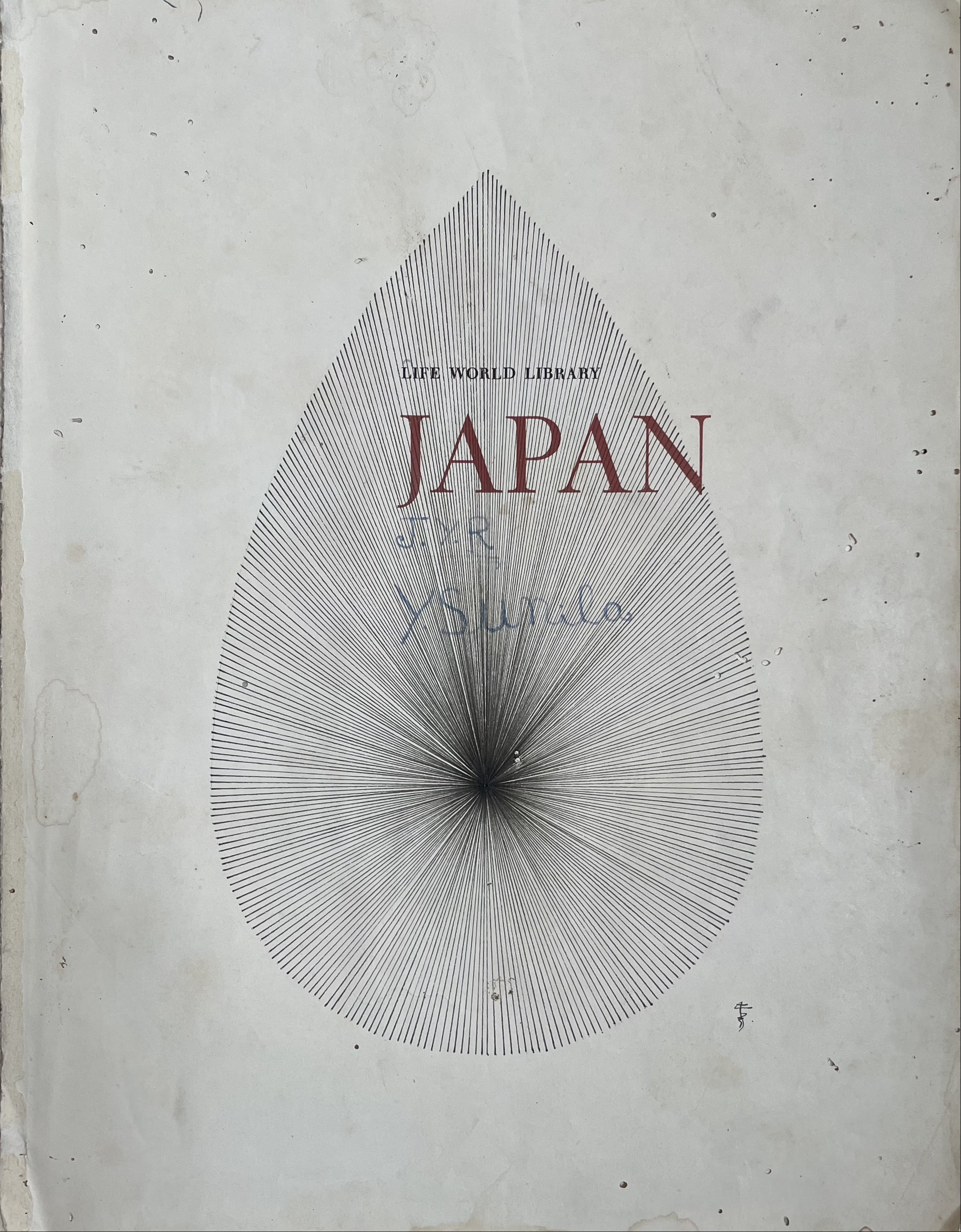Permutation no. 681
With this piece, you can really see the various holes made by the bookworms that plagued the book from which it came. You can also see every stain and smudge that are a part of the history of this paper. The Permutation design is one I've done before in other contexts. It reminds me of the Japanese Rising Sun flag, which I have to admit I have at times thought was their national flag, but it turns out it's an older (feudal) version. However, they still use it for their navy.
Possibly the most interesting thing about this paper is that it has some text written on it: J.Y.R. and Y. Sunila. I am assuming that JYR are initials for one person, and Y. Sunila the name of a second person. I posit that these are the names of young Indian students. While these Life World Library encyclopedias may not textbooks, per se, I can imagine them being used as textbooks in underfunded schools. My husband has been teaching English in foreign countries for many years, and I know that often teachers are not given many resources and have to improvise. I can also imagine that these books could have at some point been considered outdated and donated and finally ended up in a school in India and used as textbooks for teaching world history. This is all conjecture, but it's hard to imagine someone writing the name on the inside of an encyclopedia if it simply resided in someone's home or library, as it would have when I was growing up. And as I often say, this is the power of using found materials; you can make up stories based on clues, creating mysteries that may never be solved.
Ink on Found Paper
8.5” x 10.75”
With this piece, you can really see the various holes made by the bookworms that plagued the book from which it came. You can also see every stain and smudge that are a part of the history of this paper. The Permutation design is one I've done before in other contexts. It reminds me of the Japanese Rising Sun flag, which I have to admit I have at times thought was their national flag, but it turns out it's an older (feudal) version. However, they still use it for their navy.
Possibly the most interesting thing about this paper is that it has some text written on it: J.Y.R. and Y. Sunila. I am assuming that JYR are initials for one person, and Y. Sunila the name of a second person. I posit that these are the names of young Indian students. While these Life World Library encyclopedias may not textbooks, per se, I can imagine them being used as textbooks in underfunded schools. My husband has been teaching English in foreign countries for many years, and I know that often teachers are not given many resources and have to improvise. I can also imagine that these books could have at some point been considered outdated and donated and finally ended up in a school in India and used as textbooks for teaching world history. This is all conjecture, but it's hard to imagine someone writing the name on the inside of an encyclopedia if it simply resided in someone's home or library, as it would have when I was growing up. And as I often say, this is the power of using found materials; you can make up stories based on clues, creating mysteries that may never be solved.
Ink on Found Paper
8.5” x 10.75”
With this piece, you can really see the various holes made by the bookworms that plagued the book from which it came. You can also see every stain and smudge that are a part of the history of this paper. The Permutation design is one I've done before in other contexts. It reminds me of the Japanese Rising Sun flag, which I have to admit I have at times thought was their national flag, but it turns out it's an older (feudal) version. However, they still use it for their navy.
Possibly the most interesting thing about this paper is that it has some text written on it: J.Y.R. and Y. Sunila. I am assuming that JYR are initials for one person, and Y. Sunila the name of a second person. I posit that these are the names of young Indian students. While these Life World Library encyclopedias may not textbooks, per se, I can imagine them being used as textbooks in underfunded schools. My husband has been teaching English in foreign countries for many years, and I know that often teachers are not given many resources and have to improvise. I can also imagine that these books could have at some point been considered outdated and donated and finally ended up in a school in India and used as textbooks for teaching world history. This is all conjecture, but it's hard to imagine someone writing the name on the inside of an encyclopedia if it simply resided in someone's home or library, as it would have when I was growing up. And as I often say, this is the power of using found materials; you can make up stories based on clues, creating mysteries that may never be solved.
Ink on Found Paper
8.5” x 10.75”

